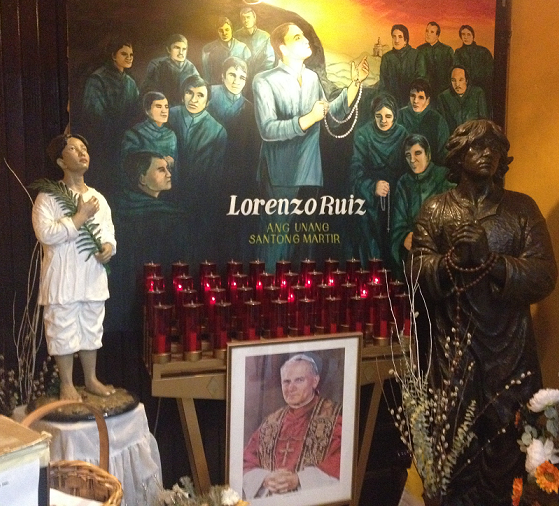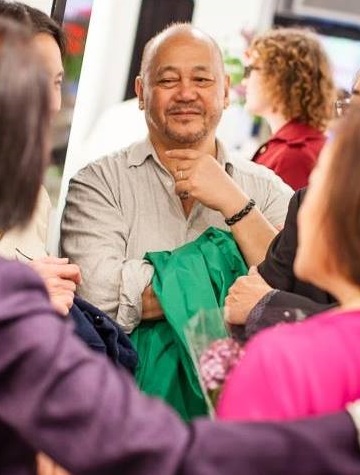The Philippine Consulate attempts an intervention (Part 3)
By Cristina DC PastorThe Philippine Consulate was saddened by the breakup of AFTA, more so by the spectacle that Filipino teachers, members of the noblest profession and role models in the community, were hopelessly divided.
In one gathering at the Philippine Center, Consul General Mario de Leon pulled Ernesto Pamolarco aside and asked how things were going. He wondered if there was a chance the two sides would ever reconcile. Pamolarco let out a wry smile.
Then, De Leon spoke in a soft voice, “Malalim ang sugat na ito at sila (meaning the feuding teachers) lang ang puwedeng gumamot nito para kayo ay magkaisa. Dahil mga teachers kayo, dapat ay ehemplo kayo sa ating community.”
In an attempt at reconciliation, the consulate sought the help of lawyer Carol Tanjutco, a certified mediator accredited with the New York Peace Institute.
“I was in one of the parties (at the consulate),” she recalled. An official approached her and mentioned AFTA. “Can we try mediation here?”
Why not, Tanjutco replied.
Her idea was to invite two certified, non-Filipino mediators who would listen to the two camps “vent.” Then, she reached out to both Castaneda and AFTA, asking if they would be willing to talk to each other in the presence of the mediators. Both camps said ‘yes.’ The consulate offered to host the dialogue.
Explained Tanjutco: “This is not a court process, there is no attorney. You will open your heart and express your frustrations that you are unable to voice out. After you’ve said your piece, you become open to resolution.” The mediators are not expected to take sides, but they would ask questions that would help sort out the conflict. They should not be seen as favoring one side over the other.
“Our role (as mediators) is not to make a judgment but simply to open the lines of communication,” she said.
“More often than not (the issue) is an emotional one,” she added.
As the talks were being planned, one side decided to back out. “Their lawyer said huwag na ituloy.” Tanjutco was mum on which side bailed.
The Filipino community has seen conflicts of this nature among organizations. They create tension and do not promote unity. Filipino Americans are sometimes seen as a community of many scattered clubs and groups that cannot work with one another much less coalesce over bigger issues such as immigration reform or rallying behind a FilAm political candidate.
Some ascribe such disputes to jealousy, power struggle, or that bogeyman called ‘crab mentality’ where people pull others down to prevent them from becoming too big, too powerful or too popular. In the case of Castaneda, some are crying ageism.
The Philippine Consulate, under De Leon, has organized a series of leadership and management seminars to educate community leaders to deal with such conflicts. There have been workshops conducted in New York, Philadelphia, New Haven, CT; and Boston to promote best practices in leadership, financial management, and running non-profit organizations. The idea is for leaders with opposing vision and management styles to learn how to continue to work together or at least manage their differences.
“Mediation is an option open to us, but somehow we have never tried it as a community,” stressed Tanjutco. “I think we should.”
When asked why he thought Castaneda was forced out, Ronie Mataquel offered his theory: “My opinion is this: when AFTA got an approval of its 501(c)3 status and the chapters began to grow, many of them (past presidents) wanted to come back. There were names mentioned who wanted to be chairman emeritus.”
I asked the same question of Ernesto Pamolarco. “I was asked if I am in favor to keep Ate Lumen as president. I told them ‘yes,’ but I was outnumbered and the board already made a final decision. I told them to give Ate Lumen a graceful exit. She has done so much for the organization.”
There was a time, mused Pamolarco, that he was an outsider looking in. Before he became a teacher, he was working odd jobs in the city, but always he would attend the Independence Day Parade and catch a glimpse of AFTA teachers looking happy as they marched on Madison Avenue. One day, he vowed to himself, he would become a teacher and he would join AFTA.
“That’s why I joined AFTA kasi nakikita ko ang mga guro na mukhang masaya at nagkakaisa,” he said in a forlorn voice. “Pero hindi pala.” (That’s why I joined AFTA because I could see the Filipino teachers looking so happy and united. They are not.)
Part 1: Anatomy of a community organization: Teachers battle over AFTA
Part 2: No comment from AFTA leadership: ‘We have moved on’
The FilAm’s Investigative Reporting Project is made possible through the generous support of our readers and contributors including the following:
Consuelo Almonte
Melissa Alviar
Amauteurish.com
Bessie Badilla
Sheila Coronel
Joyce and Arman David
Kathleen Dijamco
Jen Furer
Marietta Geraldino
Dennis Josue
Lito Katigbak
Rich Kiamco
Monica Lunot-Kuker
Michael Nierva
Lisa Nohs
Cecilia Ochoa
Rene & Veana Pastor
John Rudolph
Roberto Villanueva
2 anonymous donors












